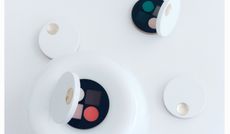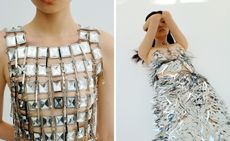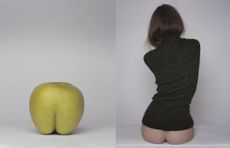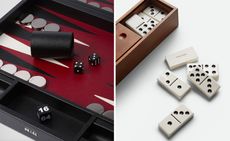Mushrooms are being transformed into sustainable luxury materials
The fashion and sportswear brands on a mission to create a greener future with fungi, from Stella McCartney to Lululemon

Mushrooms are currently enjoying a cultural renaissance beyond the kitchen. Psilocybin, the active ingredient in psychedelic ‘shrooms’, is being touted for use in the treatment of anxiety and depression, while Japanese snow fungus and fungi-derived kojic acid are believed to encourage a dewy, blemish-free complexion. Meanwhile, in science labs across the globe, start-ups are cultivating fungal innovations not only for the wellness and beauty industries, but for the fashion and sportswear sectors, too.
Mycelium, the thread-like root structures of fungi, has the ability to be transformed into sheets of biomaterial, remarkably similar in composition to durable, strong and softly patinated leather, piquing the interest of the fashion world. A kilogram of leather requires 17,000 litres of water to produce, farming livestock makes up approximately 14 per cent of global greenhouse gas emissions, and around 70 per cent of the Amazon’s deforested area is now used for cattle pastures, so the quest for more eco-friendly fabrics has fostered an increasing number of collaborations between luxury groups, labels and scientific start-ups.
In October last year, Adidas, Stella McCartney, Lululemon and Kering (which owns the likes of Saint Laurent, Gucci and Balenciaga) announced they had teamed up to form the Mylo consortium, a partnership with Silicon Valley material solutions firm Bolt Threads, aimed at commercialising Mylo, a supple, mycelium-derived alternative to leather. Meanwhile, in March this year, Hermès unveiled its partnership with MycoWorks, reimagining the fashion house’s classic ‘Victoria’ travel bag in sylvania, a mushroom leather created using the Californian biotechnology company’s patented Fine Mycelium technology.
The magical materiality of mushrooms

Prototype of a ‘Victoria’ travel bag in sylvania, canvas and calfskin, by Hermès.
One benefit of mycelium is its ability to be cultivated with less of an environmental impact than petroleum- or animal-derived products. Bolt Threads’ Mylo is cultivated in indoor vertical farming facilities, where mycelial cells are fed sawdust and organic matter in climatic conditions similar to the forest floor. Mycelium is grown into a foamy mushroom-like layer, which is harvested, processed and dyed into sheets. At MycoWorks’ California facilities, the Fine Mycelium is grown in proprietary trays, designed to induce optimal conditions. ‘We capture data at every stage of growth, which is then used to refine each sheet’s strength, flexibility and thickness, according to our partners’ specifications,’ says Matt Scullin, MycoWorks’ CEO.
It’s prescient that Hermès, famed for its leather making, is making moves towards mycelium. ‘Since its earliest days, the maison has created new materials that respond to the needs and uses of our time,’ says Hermès’ artistic director Pierre-Alexis Dumas of the three-year development of sylvania, which has been crafted to ‘complement, not replace’ its current offering. Dumas praises the material for being ‘surprisingly plump, springy and incredibly soft’.
RELATED STORY
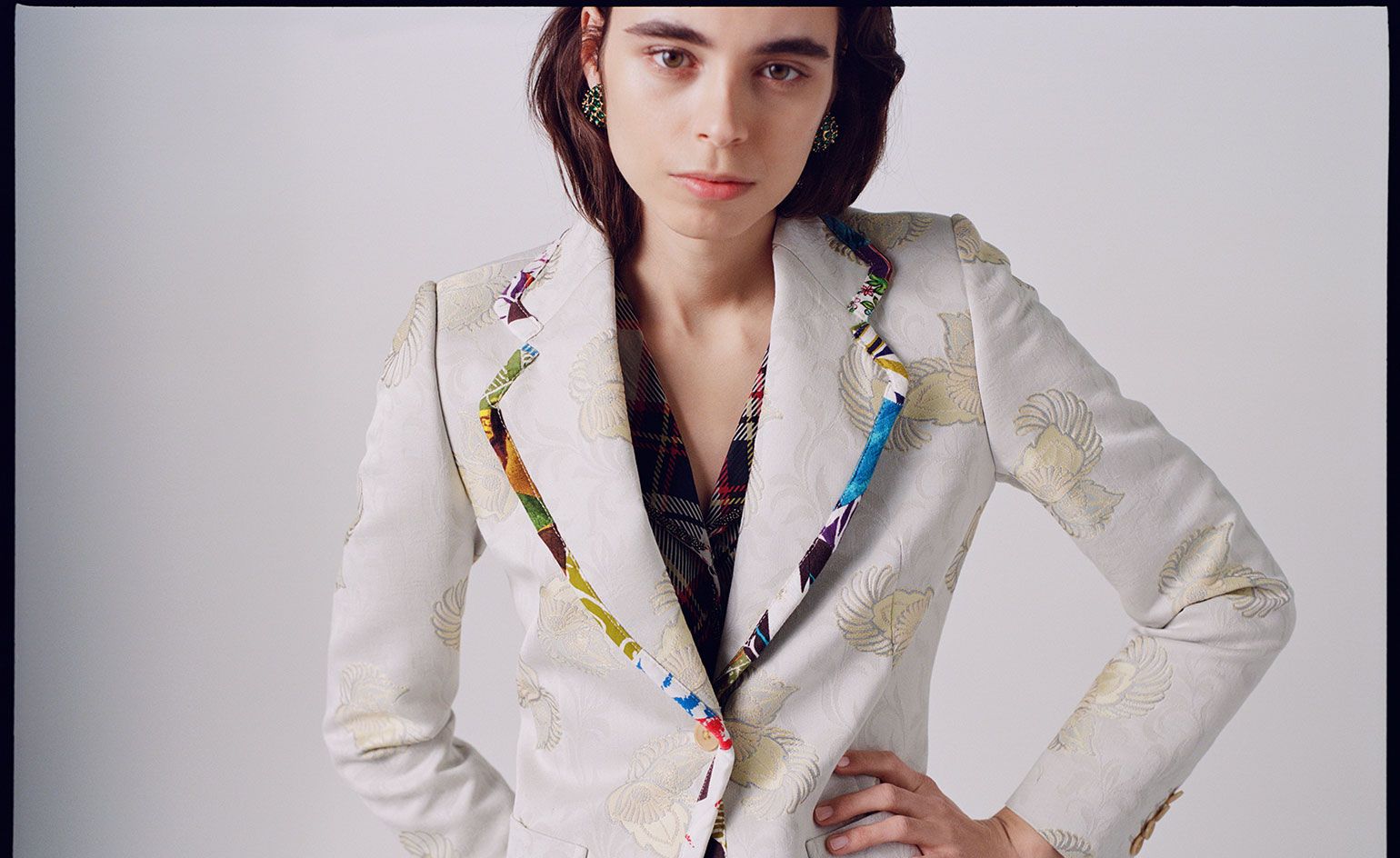
ReCollection 01, by The RealReal

Mylo bra top, by Stella McCartney, and Bolt Threads
To create Mylo, rigorous R&D and testing processes are carried out by Bolt Threads’ team of scientists. ‘We try many different avenues at once of any material,’ says the company’s VP of product development, Jamie Bainbridge, who is thrilled by the breadth of the brands that Bolt Threads is collaborating with. ‘They all have different market constraints and product creation cycles,’ she says. ‘But they’re all invested long term in our journey.’
Stella McCartney, who has never used leather, feathers, fur or skin in her designs, first began working with Bolt Threads back in 2016, later unveiling a Mylo prototype of the brand’s signature ‘Falabella’ handbag. In March this year, McCartney debuted the second design in her Mylo mission, a black bustier top and trousers in recycled neoprene with mycelium leather panels. ‘I chose to create ready-to-wear pieces to show the true breadth of what this material can do, which, in turn, is a world first,’ she explains. A month later, Adidas debuted its first Mylo design, a version of its signature Stan Smith trainers, with a mycelium leather upper, marking the first time Mylo has been used in footwear. ‘It has become the brand’s franchise shoe for innovation,’ says Bainbridge about the Stan Smith. In November 2019, the German sportswear behemoth teamed up with McCartney on a vegan iteration while, in March this year, it unveiled a version crafted from Primegreen, a performance fabric that contains no virgin plastic.
In July, Lululemon also showcased its debut Mylo designs, two yoga bags that will go on sale in early 2022, alongside a conceptual mat made entirely from mycelium leather. ‘Leveraging a material like Mylo demonstrates our commitment to creating a healthier environment through lower-impact products,’ explains Lululemon’s chief product officer Sun Choe. ‘The feel and performance of our fabrics and materials is key to product experience.’
There has been a clear shift in the fashion industry’s mindset towards learning from the natural world rather than plundering it. ‘We’re harnessing whatever nature has designed to make materials for our use,’ says Bainbridge. McCartney adds, ‘It’s so encouraging to see this shift. We need more designers helping to implement this, taking responsibility, making changes and not being afraid.’
INFORMATION
This article appears in the August 2021 issue of Wallpaper* (W*268), now on newsstands and available for free download
Wallpaper* Newsletter
Receive our daily digest of inspiration, escapism and design stories from around the world direct to your inbox
-
 Snailed it: Jessica McCormack and the Haas Brothers’ playful jewellery
Snailed it: Jessica McCormack and the Haas Brothers’ playful jewelleryJessica McCormack and the Haas Brothers give a second jewellery collaboration a swirl
By Hannah Silver Published
-
 Iné in Hampstead is a Japanese restaurant with a contemporary touch
Iné in Hampstead is a Japanese restaurant with a contemporary touchIné in London's Hampstead reflects edomae traditions, offering counter omakase and à la carte dining in a minimalist, contemporary setting
By Ellie Stathaki Published
-
 Jonathan Baldock’s playful works bring joy to Yorkshire Sculpture Park
Jonathan Baldock’s playful works bring joy to Yorkshire Sculpture ParkJonathan Baldock mischievously considers history and myths in ‘Touch Wood’ at Yorkshire Sculpture Park
By Anne Soward Published
-
 The latest Hermès Beauty collection is a riot of colour for lips and nails
The latest Hermès Beauty collection is a riot of colour for lips and nailsHermès Beauty is launching a limited-edition collection for spring/summer 2024, with lipsticks and nail polishes in six electric shades
By Hannah Tindle Published
-
 Best in shows: Wallpaper* picks S/S 2024’s standout looks
Best in shows: Wallpaper* picks S/S 2024’s standout looksAs part of Wallpaper’s Design Awards 2024 issue, we select the winning S/S 2024 runway collections – and their defining looks – at the start of a new season in style
By Jack Moss Published
-
 Year in review: top 10 beauty and grooming features of 2023, selected by Wallpaper’s Hannah Tindle
Year in review: top 10 beauty and grooming features of 2023, selected by Wallpaper’s Hannah TindleOur top 10 beauty and grooming features of 2023 span from Prada’s make-up debut to Japanese hair styling and the secrets of Björk’s nail artist
By Hannah Tindle Published
-
 Boxing Day: seductive beauty packaging from the past year
Boxing Day: seductive beauty packaging from the past yearOn Boxing Day, we reflect on some of the most seductive beauty packaging of 2023, from Hermès to Rabanne
By Hannah Tindle Published
-
 Year in review: top 10 fashion interviews of 2023, as selected by Wallpaper’s Jack Moss
Year in review: top 10 fashion interviews of 2023, as selected by Wallpaper’s Jack MossFrom rare glimpses inside Chanel, Hermès and Jil Sander, to spending time at home with Margaret Howell, these are the stories behind the figures who have defined a year in style
By Jack Moss Published
-
 Winter layering: six nourishing balms to envelop your dry skin in luxury
Winter layering: six nourishing balms to envelop your dry skin in luxuryMaster winter layering with these luxurious balms made to shield your skin, hair and body from biting temperatures
By Hannah Tindle Published
-
 Luxurious board games from fashion’s finest, made to gift or treasure
Luxurious board games from fashion’s finest, made to gift or treasureFrom a sleek Prada backgammon set to a handcrafted wooden chess board by Hermès, luxurious board games made to amuse even the most fastidious of style aficionados
By Jack Moss Published
-
 Wallpaper* gift guide: shopping with beauty & grooming editor Hannah Tindle
Wallpaper* gift guide: shopping with beauty & grooming editor Hannah TindleFrom a denim-toned eyeshadow palette to the perfect pair of jeans, and a heavenly blue bathrobe, these cool tones and stylish finds make for a super-luxe gift guide
By Hannah Tindle Published






